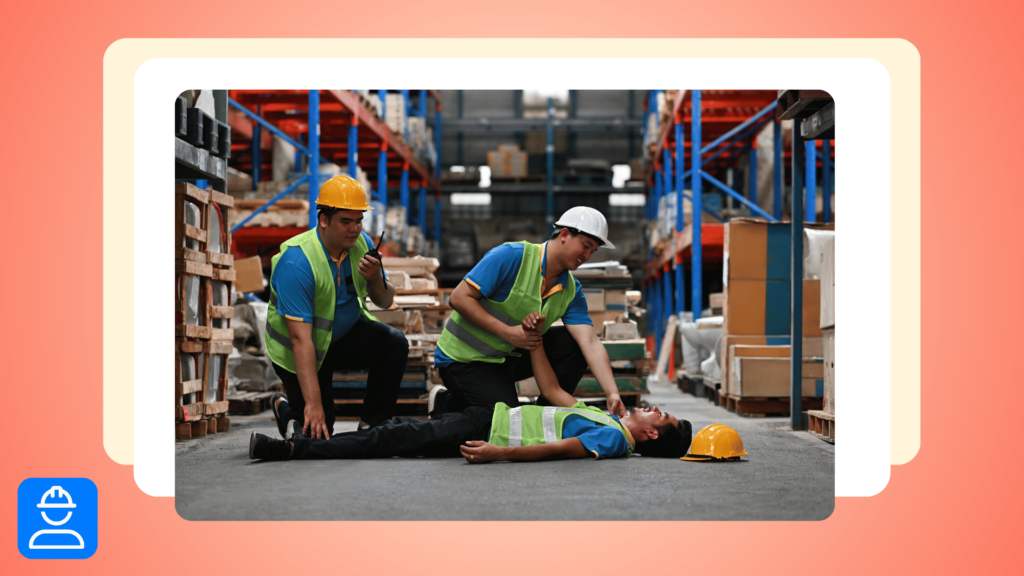Optimize your EHS materials management system
There are a lot of hidden struggles that come with managing EHS supplies for an organization. Implementing a successful materials management system isn’t impossible, but it does take some effort.
In this post, I want to share some of the experiences I’ve had managing EHS supplies, what has worked for me, and what I would suggest to anyone undertaking this complex task.
Figuring out your supply needs
Many companies don’t want to spend a lot of money on the sole mission of managing their EHS supplies. If you go to work for one of these companies, you’ll find yourself spending a lot of time managing your EHS supplies, especially your PPE.
When you walk in on your first day, you’ll find yourself with a few key goals with your materials management:
- Keep enough supplies on hand so that employees don’t run out in between orders.
- Avoid overstocking supplies to the point where you don’t have anywhere to store them.
- Stay within your materials budget.
- Figure out your suppliers’ lead times so you know when to reorder each item.
So, where do you start? As always, my answer is your frontline workers.
Check in with supervisors to learn their supply usage rates. They’ll know way more about PPE needs than you ever will on your own. When you’re figuring out your materials management system, you really don’t want to guess how much to order.
If you’re just getting started with this company or facility, figure out EHS supply needs as quickly as possible. You can send out an email to the supervisors, ask them in person, or even ask their employees (if you have the time).
Tracking your inventory of EHS materials
After you place your first order, you need to track your usage manually. The goal here is to see what your usage is even if you have the input of other employees.
This will help you make future orders, but you can’t just track your inventory once and have an accurate projection. You’ll need to track your orders for a couple of months before you can establish an accurate baseline of how many supplies you need on hand.
Even then, you may have to revisit your tracking data at different times during the year to ensure complete accuracy.
Storing the inventory of supplies
One of the biggest challenges when creating a materials management system is figuring out the best way to store the materials. You need to ensure that employees have access to the PPE, but I’ve personally found that this can be hard to do effectively.
The reason it’s challenging is because while employees should have access to PPE, they shouldn’t have completely unrestricted access. Part of managing the materials is maintaining control over your inventory.
Otherwise, you may run out of things much faster than you anticipated.
PPE cabinet system
Some companies place PPE cabinets throughout their sites. This approach is okay, but it’s difficult to manage sometimes because you’re running around taking inventory of everything that’s running low.
At first, you might not know how frequently to take inventory and order supplies. After doing this a couple of times per week, however, you should start to get a feel for how much supplies to reorder at what interval.
If you go with the cabinet approach, you may need to secure it while still giving employees some access to PPE. Some companies may be okay leaving the cabinet unsecure while others may want you to lock the cabinets—only giving access to supervision.
Just be aware that if you’re already limited in the amount of time you can devote to materials management, a cabinet system may prove to be too time-consuming.
PPE vending machine system
With the technology we have today, you can set up your PPE, or nearly any other supplies, in vending style machines. These machines automatically keep track of what has been dispensed and by who.
Many EHS professionals prefer using PPE vending machines because they:
- Make it easy for supervisors or workers to get their own supplies without assistance
- Allow you to order just the amount needed to keep the vending machine stocked
- Keep supplies visible so you (and anyone else) can see when it’s getting low
- Save you the hassle of constantly refilling the cabinet
- Reduce the amount of storage space you need for your materials
They allow you to automatically reorder supplies or even have the vending company come out to restock the material for you.
This process is nearly hands-off. Your employees have access to the materials, and you have some control over the dispensing.
I’ve set up these machines to only allow a certain amount of material to dispense within a specific time frame. Having the machine automatically reorder inventory can save you several hours a week.
You also don’t need to take the initial steps of usage tracking. The main downside to this process is that it’s not always free.
Some vending suppliers will do this service for free if you spend a certain amount of money with their company throughout the year. Other suppliers charge you regardless of how much you spend.
I should also note that you can purchase the machines and software to perform this yourself. However, this is costly, and you’ll still end up restocking the machines if you take the self-purchase route.
As with everything else in the world today, technology has made some things easier for EHS professionals, but there is always the caveat. You all know what that is.

Jason Hathcoat
Jason is a seasoned EHS professional with more than 17 years of experience working in health and safety. He currently works as an EHS manager for a large global HVAC company.



